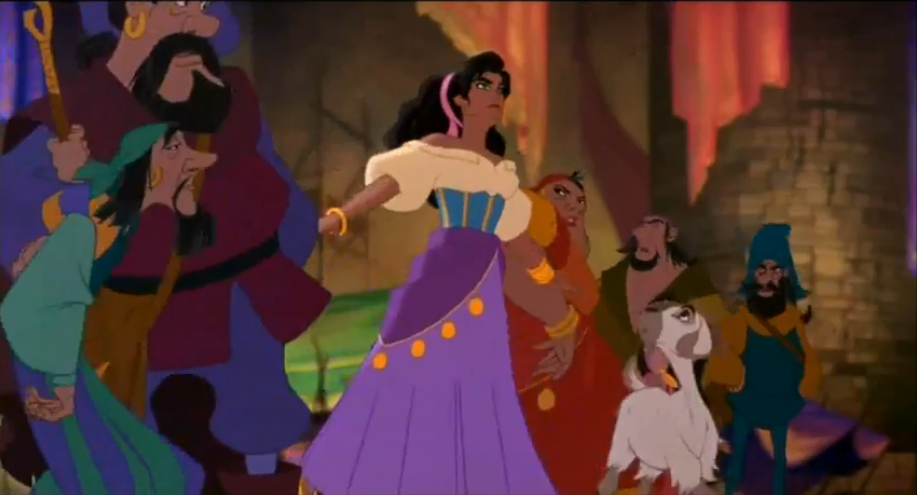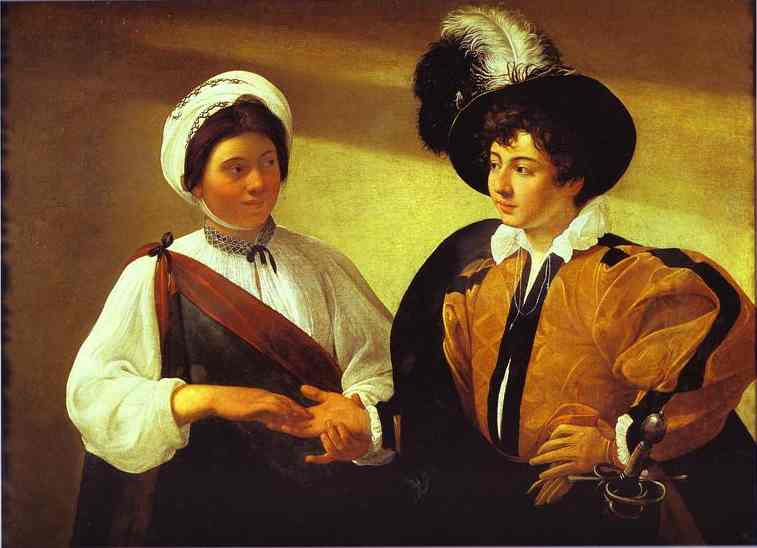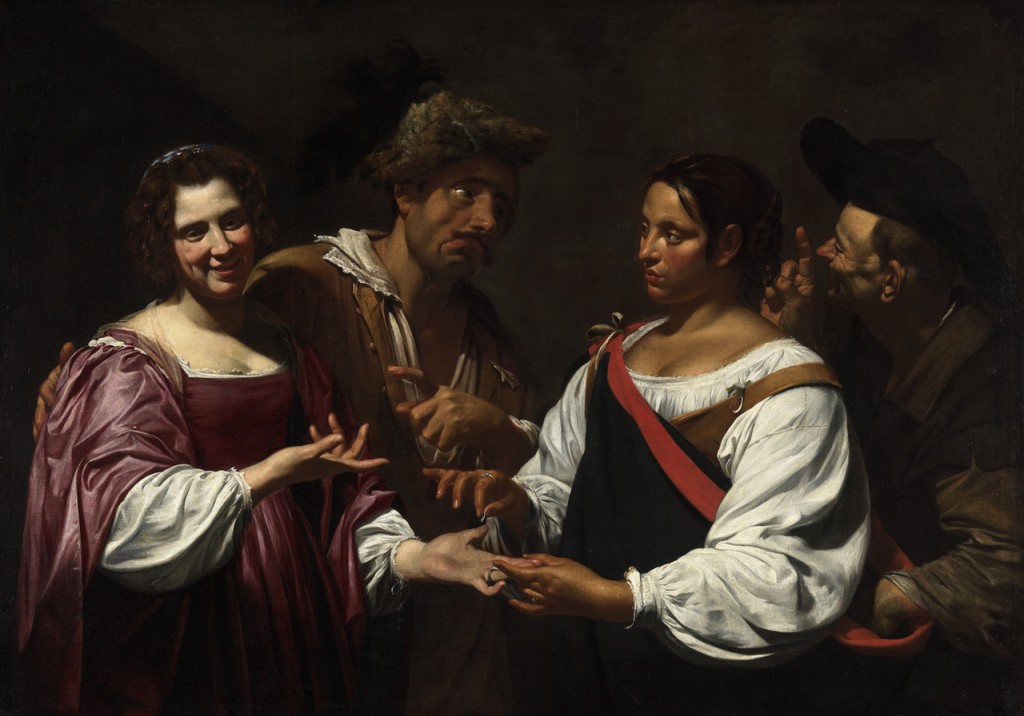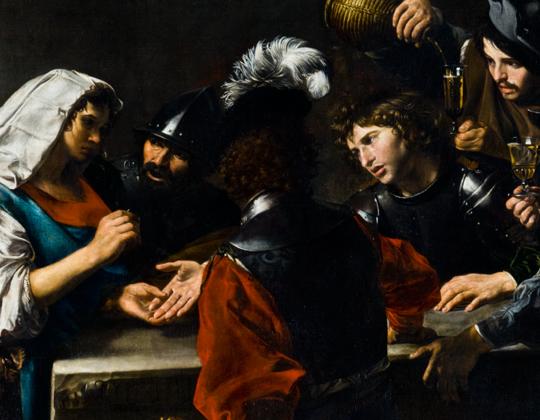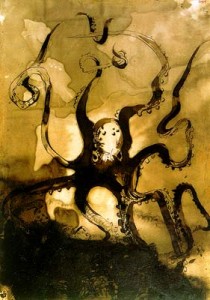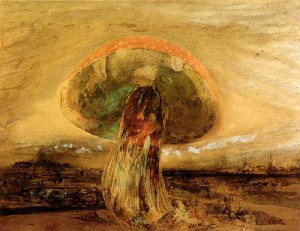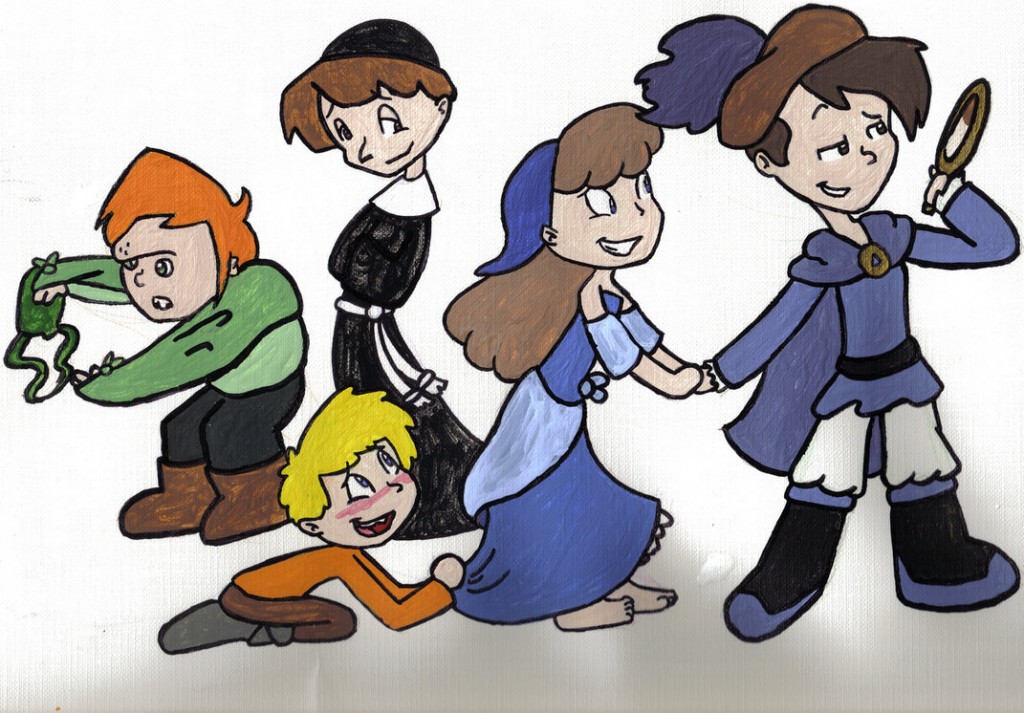Medieval Romani Women like Esmeralda have been long depicted as wearing specific clothing. Long flowing colorful skirts, corsets, low-cut chemise blouse and lots of jewelry. But is this accurate? Did medieval Romani dress this way? Please keep in my I’m not expert on any of this.
To be fair the Romani were a very uncommon subject of medieval art. Art back then was for the most part was commercial, an artist was hired to paint someone’s portrait so there is a lack of Romani in traditional art history works. And painting is largely how people glean what people in Medieval times wore.
However, there are three works that depict Romani women that even though they are from the Renaissance gives a slight hint as to what Romani women could have worn and very well what a girl like Esmeralda could have wore.
Let’s start with Caravaggio’s Fortune Teller. There is actually two versions of this painting done a year a part. This one is the second version from 1595. In both paintings the women is dress the same. The Fortune teller in this is identified as a Romani. She is wearing a high neckline chemise that has a slit in it with a embroidered neckline that ties closed. She also wears a sari-like garment. It has a red broader and ties at the shoulder. Romani are said to have migrated out of India so a sari would make sense that they could have wore this. She also wears a turban-like headdress
The depiction by Vouet is similar to Caravaggio but is different. The Romani girl in this wears the sari-like garment but her chemise blouse is lower cut and she seems to wearing corset-like garment. Her sari also has a red boarder and ties at the shoulder. She is not wearing a headdress. This painting was made in response to Caravaggio, so Voulet could have just copied the clothing.
Then there is Boulogne’s take on Caravaggio’s Romani theme. In this one the Romani girl is still a fortune teller and is wearing a veil like headdress. The headdress is akin to Gina Lollobrigda’s costume in the 1956 version. She doesn’t seem to be wearing a sari either but instead she is wearing an overdress. This also makes sense that a Romani would wear clothing that is more European is style as they were often gifted clothing for their fortune telling.
One thing you might notice is the lack of Jewelry. None of these paintings have the hoop earrings, the coins or anything that fits the cliche look. The pervasive look for the “Nomad” is an 1800 century one or even just a myth.
Not that I think film version would ever go this route for Esmeralda’s costume, costume designers seem to hate historical accuracy (I’m looking at you Colleen Atwood for your designs in Memoirs of a Geisha and what you said in the featurette) but I can’t help but think how different Esmeralda’s dancing would be if she was in the Sari-garment. And how different she would be perceived. Her low cut blouse and defined waist of a corset couldn’t carry the sensualness, it would all have to be on the actress.
Get Michelangelo Caravaggio (The fortune teller) Art Poster Print

